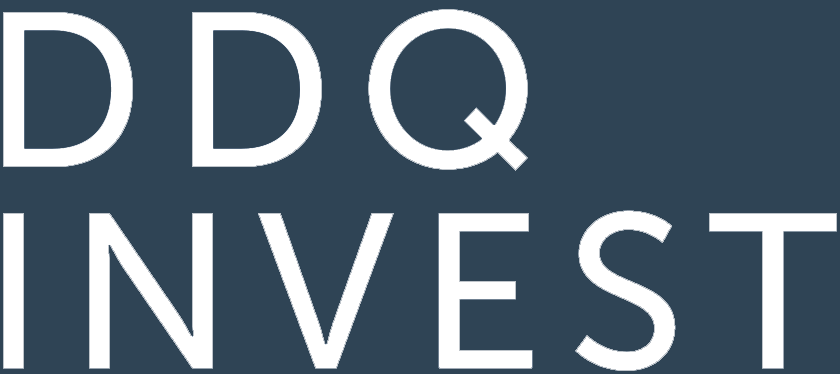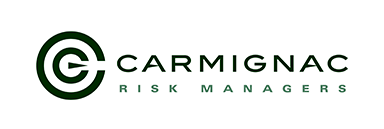The hunt for quality growth in the financials sector has long been a slog for those wanting to limit their sensitivity to the economic cycle, but beyond the traditional banking sector, opportunities are out there. Mark Denham, manager of the FP Carmignac European Leaders Fund, explains how he balances the fund’s allocation to financials, and why there is so much emphasis on financial infrastructure.
Banks provide the backbone of the financial sector and of the broader economy, but how to approach this sector from a quality growth lens provides a particular challenge. There is often the sense that they do not fit the quality style due to their high leverage – amplifying both gains and losses – as well as inconsistent revenues and profits, and the risk of the effects of external shocks. We disagree with this broad-brush view; there is nuance if you look hard enough.
We have a singular approach to investing in financials. Unlike many quality growth equity strategies, financials, including balance sheet banks, are a genuine part of our investment universe, a differentiating factor for us – as exemplified by our current 14% exposure to the sector, of which a notable share is in financial infrastructure, a necessity we see in achieving societal improvements. Indeed, United Nations Sustainability Development Goal 9 focuses on industry, innovation and infrastructure by targeting access to financial services and markets.
Gathering interest
Banks have been on a strong run since 2020, driven by the value rotation – benefiting those lower-valued banks, in particular – macroeconomic shifts and improving fundamentals. Meanwhile, interest-rate hikes have boosted revenues, thus inherently improving fundamentals – even more so as we exited the negative interest rate policy era.
After a decade of sub-par capital returns, banks are now delivering once again. These robust earnings were turbocharged by higher net interest income due to higher rates, which widened the spread between what banks earn on loans and what they pay on deposits, while stable loan growth and a resurgence in deal activity also supported earnings.
Historically, banks were not considered high-quality stocks due to their leverage and often volatile earnings. And due to their limited differentiation in offerings – mainly deposits and loan products – they have not demonstrated any sort of distinct economic moat. They are exposed to risks such as credit defaults and interest-rate fluctuations, are susceptible to regulatory changes and geopolitical uncertainties, and don’t always have the luxury of consistent revenue streams.
But today the sector is at its healthiest since the Global Financial Crisis. Capital management and profitability have improved and, with through our strict quality growth lens, we are taking a closer look at the banking sector in Europe, with a few banks now creeping back through our financial screens.
Of course, caution seems sensible and stock selection remains key. Is the trend we’ve seen over the past five years here to stay? Is there a risk of weakening earnings momentum? While the profitability of these banks has increased over the interest rate hiking cycle, prolonged political and trade uncertainty, coupled with lower interest rates, could have a negative impact on banks and their profitability, dampening net interest margins. European banks take more than 50% of their income from net interest income, meaning that they are highly sensitive to rate cuts – this is also something to keep an eye on. All this being said, we believe there is ample cause for positivity towards the sector, most notably in banks with a focus on wealth management, or in the midst of a turnaround story, such as UBS.
Yet where we have greater confidence is in what we describe as the ‘infrastructure play’ around the sector, whether is the form of securities exchanges, payment facilitators or even investment platforms within wealth management.
Finding security
Securities exchanges consist of companies such as Euronext or Deutsche Boerse who provide trading and post-trade services across a range of financial instruments. They enjoy oligopolistic benefits due to high barriers to entry. And while they tend to be lower compounding stocks, they sit in the mid to high single-digit range on the basis of a mix of transactional and non-transactional earnings growth. They offer stable revenue streams from transaction fees, listing fees, and market data sales, growth opportunities via increased trading volumes and new listings, and are typically well-regulated, providing a level of safety and reliability for investors. Meanwhile, they have counter cyclical-qualities, tending to generate higher returns during periods of economic stress due to an uptick in trading and hedging activity. These companies often benefit from market volatility (supporting transaction activity) while the recent fiscal reforms in Germany set to encourage wider economic growth, could prove a tailwind as assets flock back to Europe over the coming years.
Payment approved
Companies like Adyen, within the Fintech space, provide payment processing to retailers. While there is a tech component which adds a layer of higher growth prospects, they have been noticeably reinvesting revenues to stay ahead of the curve in their markets. These fintech companies leverage technology to provide innovative financial services, often disrupting the existing market, while their economic moat relies on both the unified global payment system as well as the high switching costs to other providers. These companies boast structural growth drivers, namely the global shift towards digital payments and e-commerce growth; as cash usage decreases in favour of card and mobile payments, these companies will be beneficiaries (relative to banks, companies like Adyen look set for 50% three-year EPS growth versus 16% for the MSCI Europe Financials index1. These businesses also boast scalable infrastructure across regions and channels, are capital lite and enjoy recurring revenues (with straightforward fee models).
We see these companies benefiting from growth in e-commerce and, more broadly, the increased digitalisation of the economy. They also enjoy some defensive qualities given their lack of cyclicality.
Taking stock
Investment platforms such as Nordnet and Fineco Bank provide the infrastructure for individuals to invest their savings. They do not have the risk factor carried by traditional banks from their lending facilities, and tend to have diversified revenue streams and better cost-to-income ratios. We particularly like their focus on retail investors, given the structural shift towards self-directed investments and wealth planning services – key drivers of growth for these higher margin platforms. Meanwhile, their digital infrastructure is key; they tend to outpace traditional banks in terms of product delivery, service innovation and user experience. For example, they are at the forefront of artificial intelligence (AI) integration and have demonstrated better adaptation of newer trends such as crypto-linked investments and digital discretionary services. Their modern infrastructure also tends to be cheaper to run than their counterparts, while we expect these businesses to remain attractive, even in the face of lower rates.
Banks, but no banks
Within the FP Carmignac European Leaders Fund, we see financial infrastructure as a core theme, with our exposure currently coming primarily via two names, Deutsche Boerse and Fineco Bank, in particular:
Deutsche Boerse
One of the three main European exchanges alongside Euronext and LSEG, Deutsche Boerse’s core business is across trading and post-trade processing. The structural reforms in Europe, such as in German pensions and the EU’s Savings and Investment Union, are expected to channel more institutional and retail capital into investments. Meanwhile, the company’s acquisition of Simcorp, a software solution for asset owners, is a growth driver and source of recurring revenue as it transitions to a software as a service (SaaS) model. Similarly, the company’s data and governance services bring further quality to clients in areas such as ESG. Overall, as a long-term compounding stock, Deutsche Boerse is at the forefront of innovation and technology as it integrates AI into software development and operations, and integrates digital assets into its post-trade services.
Fineco Bank
The Italian digital investment platform, Fineco, offers a vertically integrated banking, trading and investment platform to Italian retail investors. Its strong brand and high barriers to entry give it a competitive edge which has enabled rapid growth; it is now among the top five asset gatherers in its market. Fineco is also the market leader in ETF trading, with 70% of market share. The company enjoys low double-digit growth and supports its forward-looking growth potential, reinforced by its scalability, the structural growth in Italian retail investing, and the growing demand for financial advice.
Financials are often not considered in the space of quality growth equity investing, and for good reason, however, change is afoot. Meanwhile, via our financial infrastructure play, we are able to enjoy the benefits of exposure to the sector, the diversification qualities that these companies bring, all while taking less risk and having less exposure to cyclicality. As ever, stock picking is the key and we are at pains to diversify our exposure across the sector as a whole; indeed, our 14% weighting in the sector is well diversified across banks (c5%), stock exchanges (c3.5%), payments (c1.5%) and investment platforms (c.4%).

